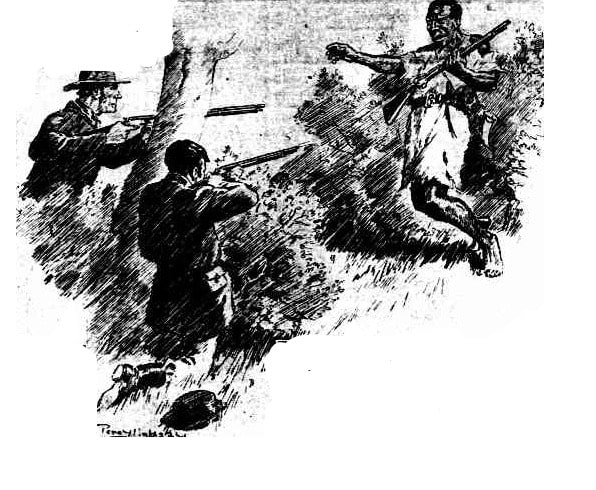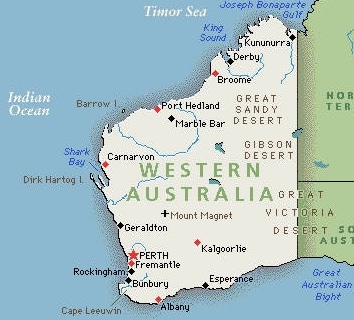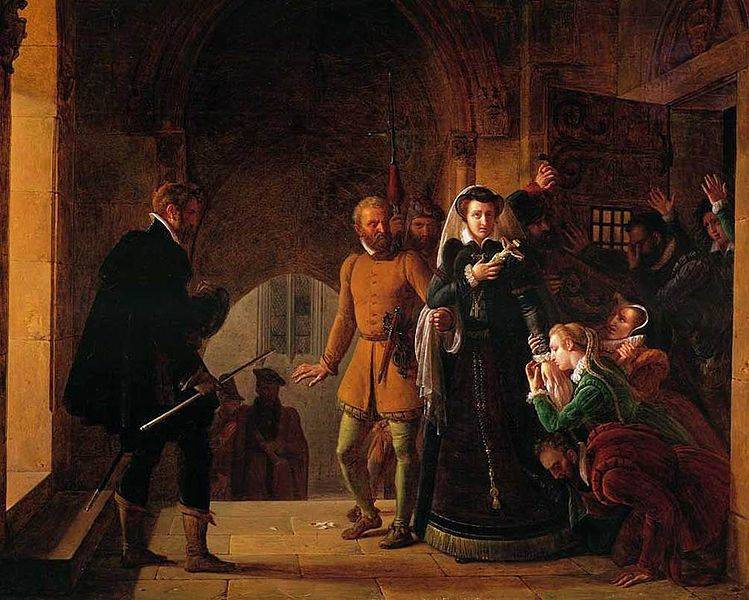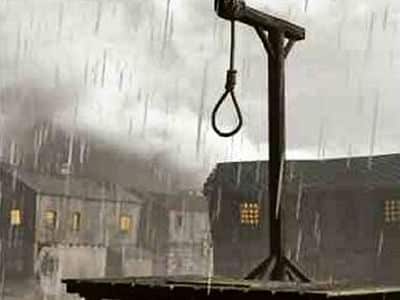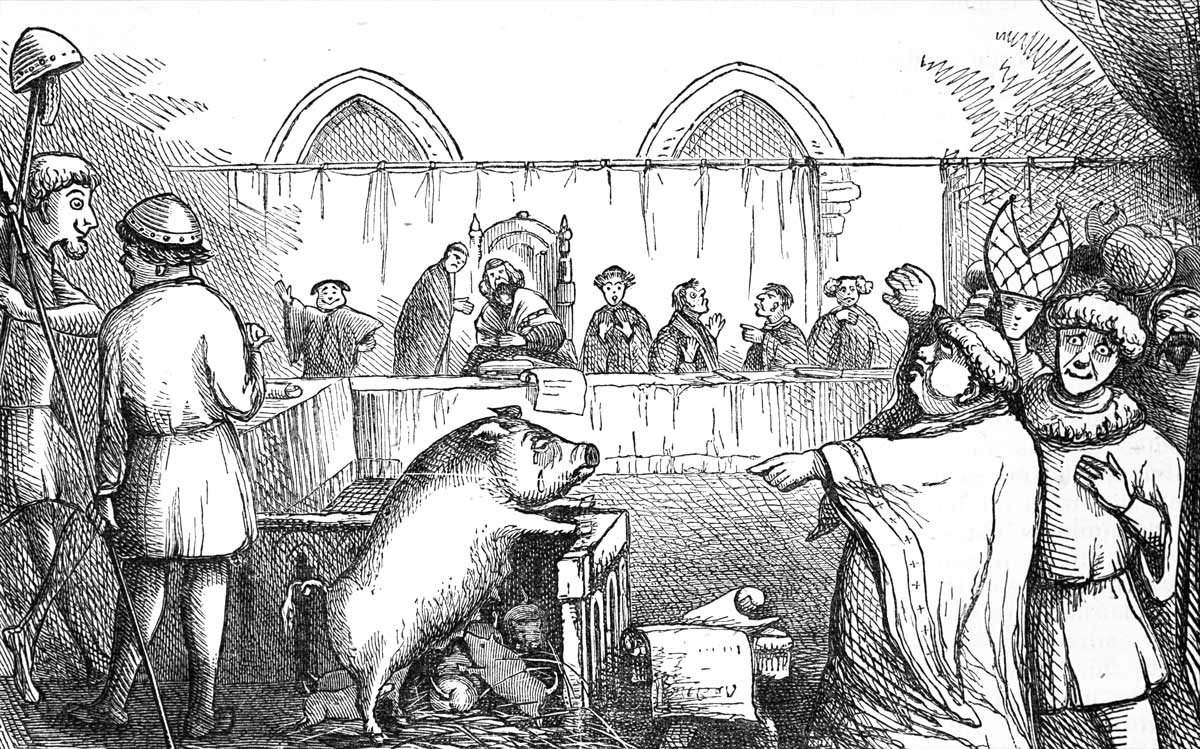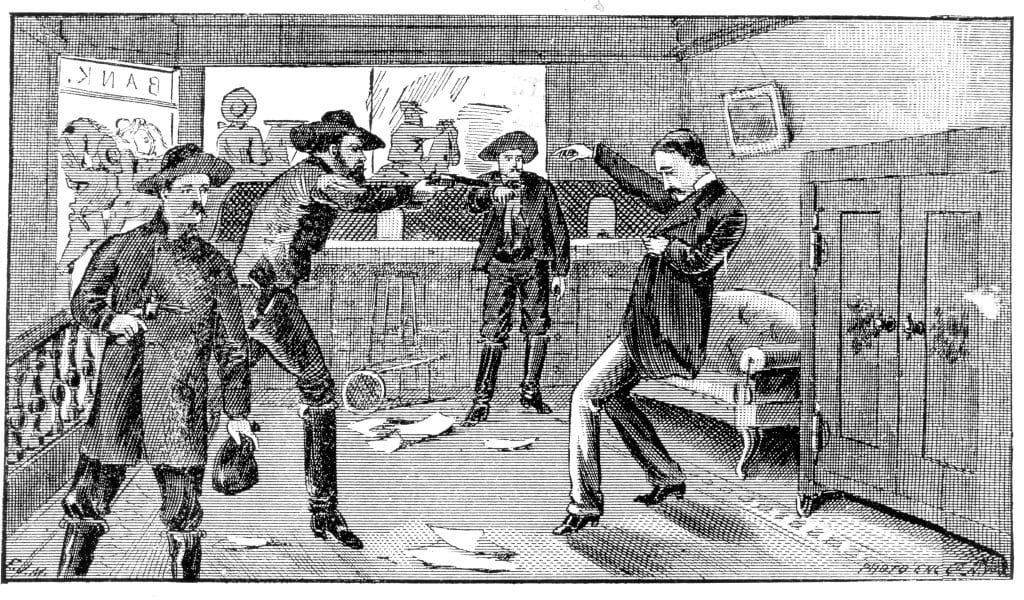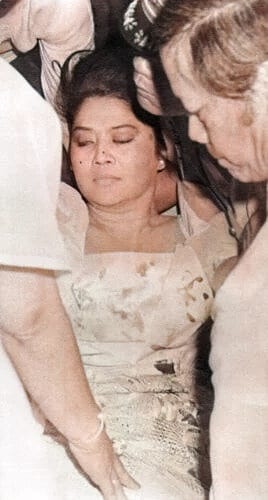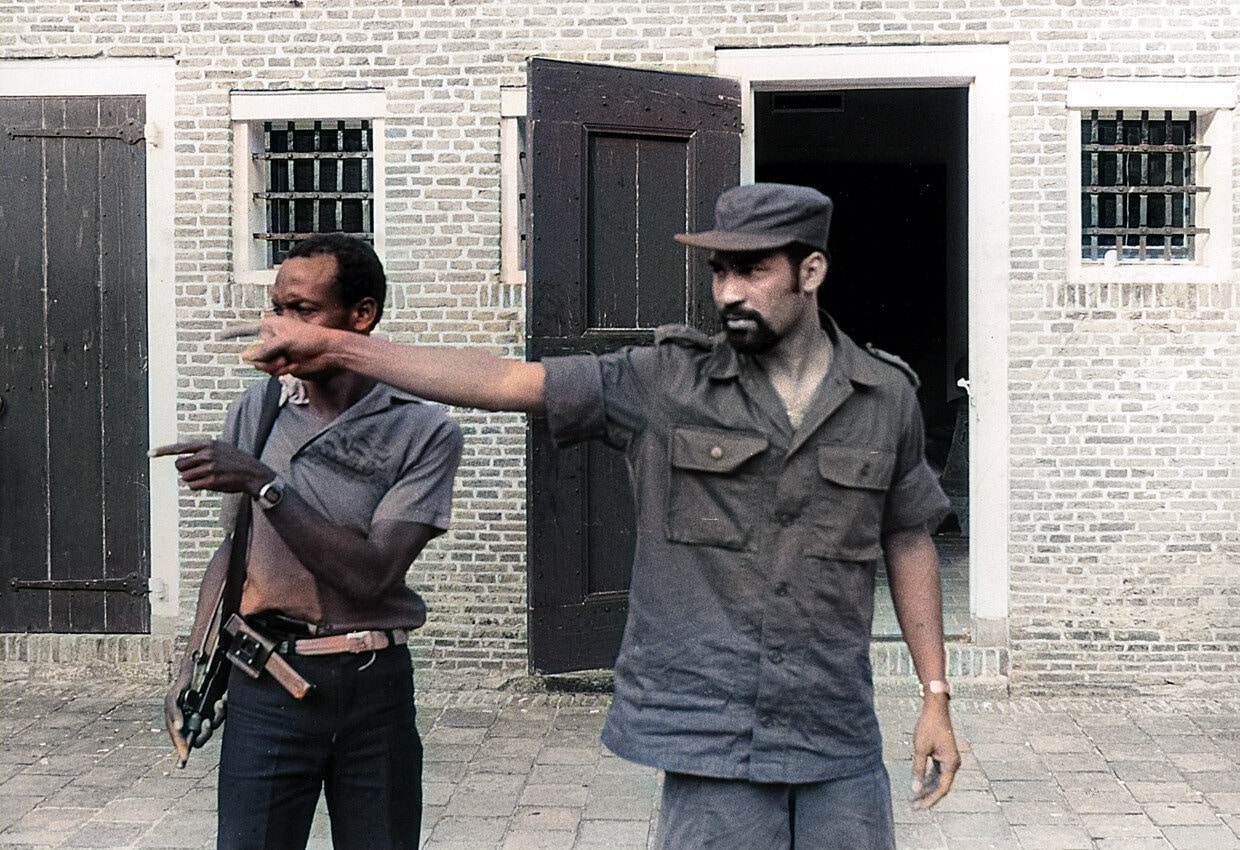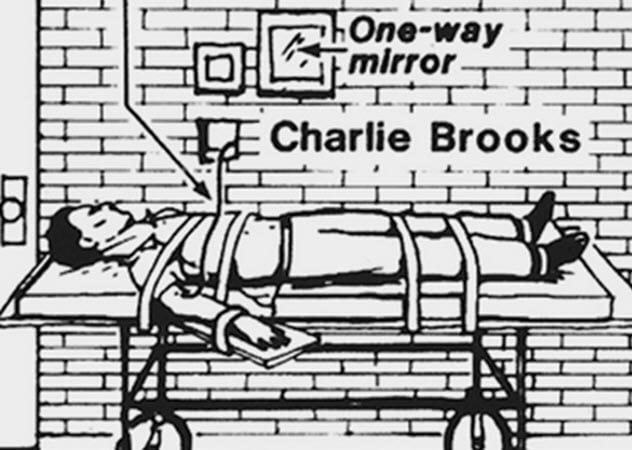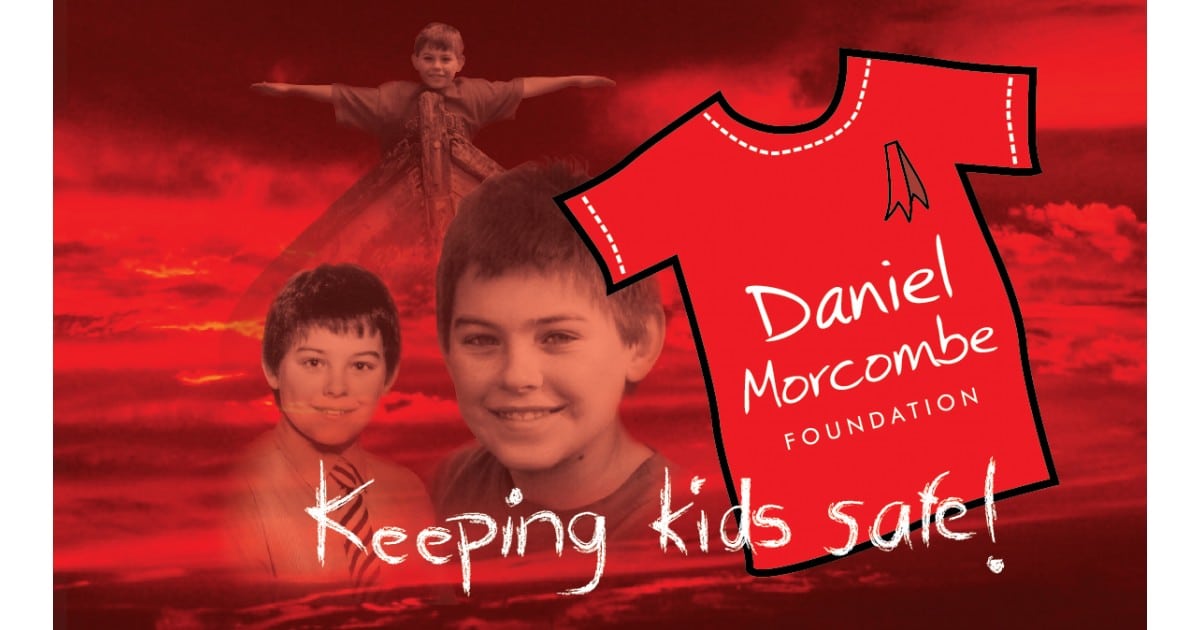Casting a light on November 30th in True Crime History, we uncover a mosaic of human experiences where tales of justice, tragedy, and infamy intertwine.
1796: ⛓️ Francis Morgan Gibbeted on Sydney Harbour’s Pinchgut Island
On this day in 1796, In the midst of Sydney Harbour lies the picturesque Pinchgut Island, known today for its iconic Fort Denison. But in the early days of the colony, this tiny island bore witness to a macabre chapter in history, with a convict named Francis Morgan meeting a gruesome fate there. 💀
Francis Morgan’s journey to Pinchgut Island began in 1793 when he arrived in the colony of New South Wales aboard the ship Sugar Cane, surviving the attempted convict mutiny on their way to Sydney.
Morgan had a dark past, having been tried for the murder of a man in Dublin, Ireland, and was caught wearing the victim’s watch. His sentence, initially death, was commuted to transportation for life. 🚢
However, upon reaching Sydney, Morgan’s violent tendencies emerged once more. In mid-October 1796, he brutally bashed a man named Simon Raven to death on the northern shores of the harbour. This heinous act led to his second encounter with a death sentence. ⚔️
As Francis Morgan awaited his execution, he received a chilling piece of news. His body would not find peace in death; instead, it would be hung in chains on Pinchgut Island, serving as a grim warning to others as required by the Murder Act of 1751. Morgan, stoicly commented favorably on the splendid view of the harbor he would have from his eerie perch, noting its unparalleled beauty. 🌅
For at least the next four years, Francis Morgan’s lifeless body endured the elements, suspended in the middle of Sydney Harbour—a haunting reminder of the consequences of a life gone terribly wrong. ⏳
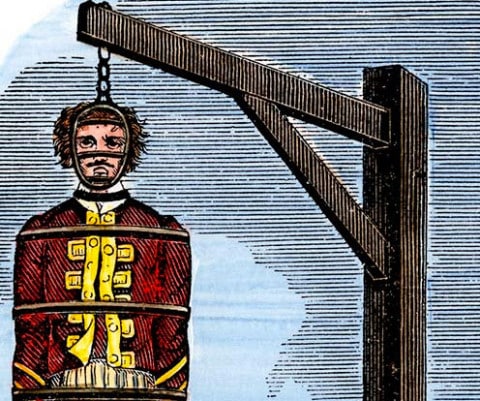
1796: 🔒 John Lawler and Martin McEwin Hanged for Robbing the Public Stores
On this day in 1796 in Sydney was a sombre day full of executions. The newly formed bustling streets of Sydney saw John Lawler (convict) and Martin Mcewin (soldier) faced the hangman’s noose for robbing public stores.
Despite the seemingly minor offence of stealing food, they faced the same fate as that of a murderer, Francis Morgan, whose vile act of wilful murder darkened the colony’s early history. ⚖️🔓
Both John Lawler and Martin Mcewin were executed and found their eternal rest at Sydney’s first public cemetery known as the Old Sydney Burial Ground, a site now known as Town Hall in the heart of Sydney. The burial ground remained in use until January 1820. During the 28 years the cemetery operated some 2240 burials were added. Excavations of the Town Hall basement in 2008 identified 66 remaining graves in total. 🏛️
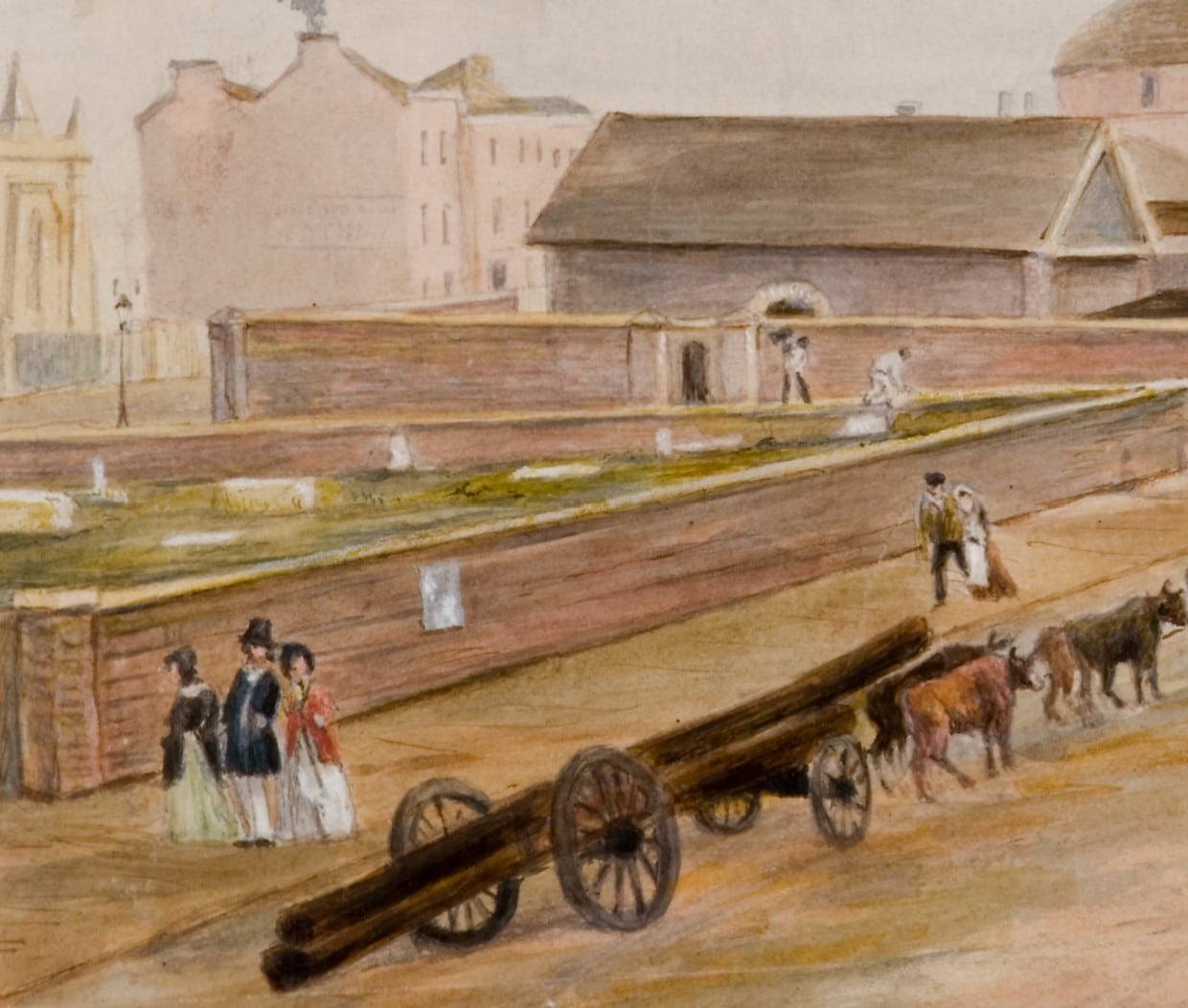
1900: 💔 Oscar Wilde’s Iconic Farewell
On this day in 1900, the world lost one of its most brilliant and controversial literary figures, Oscar Wilde. The renowned Irish writer and wit, known for his sharp humor and flamboyant style, spent his final days in a Paris hotel room.
Oscar Wilde’s life had taken a tragic turn when he was imprisoned for “gross indecency” due to his homosexual relationships. After his release, he fled to France to escape the judgmental eyes of Victorian England. He found himself in a modest hotel, facing the drab wallpaper that adorned his room.
Legend has it that, in his last moments, Wilde remarked on the wallpaper, saying, “One of us had to go.” It was a poignant and ironic statement, reflecting the profound struggles and conflicts he had faced in his life.
Oscar Wilde’s death marked the end of an era and the loss of a literary genius whose works continue to be celebrated today. His wit, humor, and unique perspective on society remain celebrated in the world of literature. 📖🎭🖋️
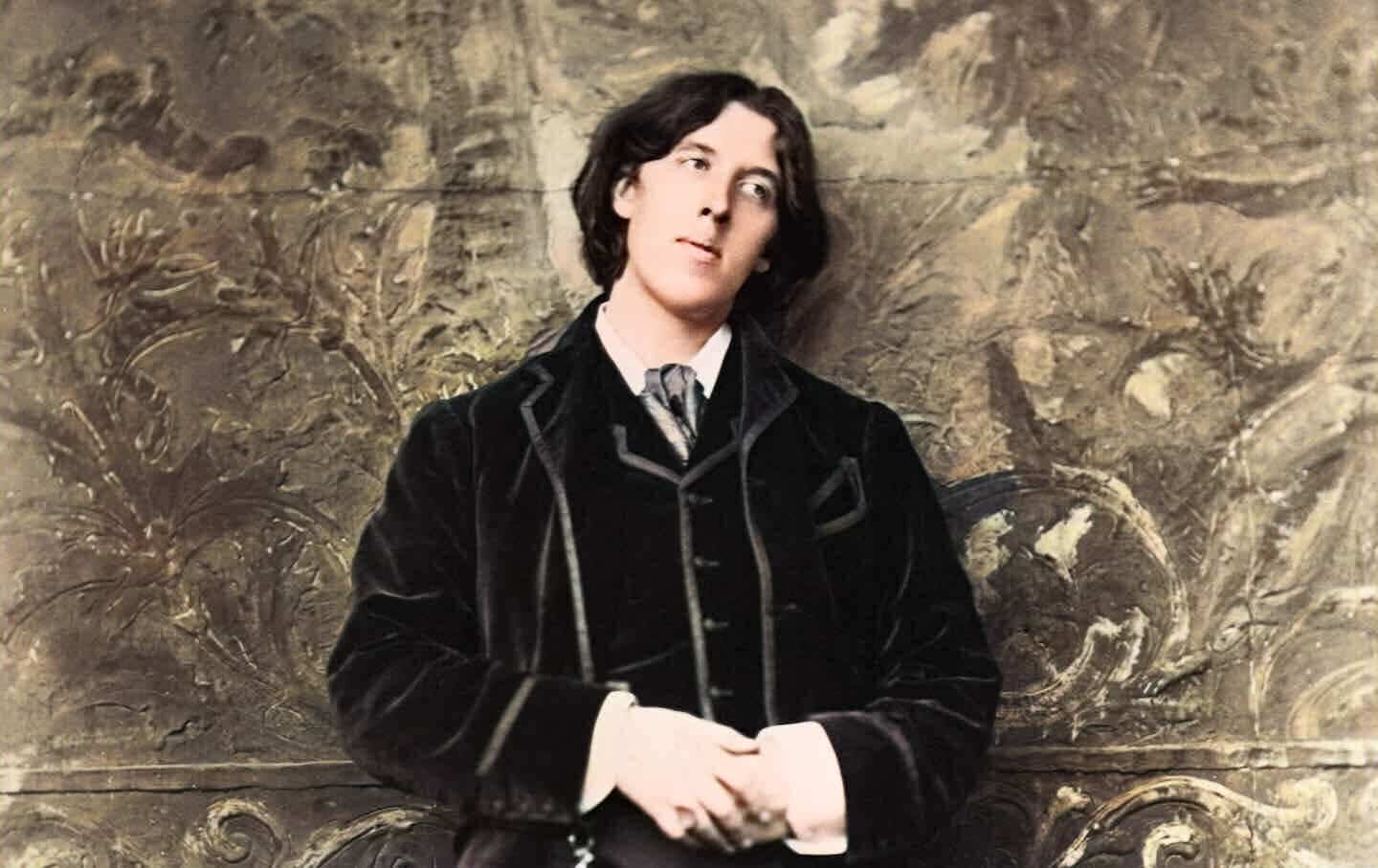
1962: 🕊️ Andrews Hanged in Grim Finale
On this day in 1962, a dark chapter in history concluded as Lowell Lee Andrews, a 22-year-old college student at the University of Kansas, faced execution by hanging for the horrifying murders of his mother, father, and sister. 💔🕊️
His shocking crimes unfolded on the night of November 28, 1958, when he callously shot and killed his own parents, William and Opal Andrews, along with his 20-year-old sister, Jennie, within the walls of their Wichita, Kansas, home. The nation was left in disbelief as the gruesome details of this family tragedy emerged.
Initially, Andrews attempted to deflect suspicion by reporting the murders to the police, deceitfully claiming that an unidentified intruder had committed the heinous act. However, law enforcement swiftly turned their attention towards Andrews as their investigation uncovered a web of damning evidence.
The pieces of the puzzle fell into place as it was revealed that Andrews had taken out a substantial life insurance policy on his family shortly before their deaths, a policy that promised a substantial windfall upon their demise. Moreover, the murder weapon was traced back to him, eroding the facade he had tried to maintain.
During his trial, the chilling truth emerged. Andrews confessed to the murders, divulging that he had been motivated by two sinister factors: the lure of insurance money and a desire for emancipation from what he perceived as his family’s suffocating control.
Justice was served as Lowell Lee Andrews faced his ultimate punishment, hanging at the Kansas State Penitentiary in Lansing, Kansas. ⚖️🪓🏚️

1989: 🌌 Aileen’s Fateful Beginnings
On this day in 1989, a chilling chapter in the life of Aileen Wuornos, one of America’s most infamous female serial killers, began. Aileen, who had a troubled past as a victim of abuse and exploitation, found herself on a path that would lead to a series of gruesome murders.
Aileen often resorted to prostitution to make a living, and on this fateful night, her client was Richard Mallory, a convicted rapist. According to Aileen, the encounter took a horrifying turn when Mallory attempted to assault her. In what she claimed was an act of self-defence, she shot him three times, ending his life.
However, this event marked the beginning of a series of killings by Aileen Wuornos. She went on to claim the lives of six more men, raising questions about her motivations and the transformation from victim to predator. While the first murder may have been driven by self-defence, subsequent acts left even sympathetic observers sceptical of her motives.
Many were left wondering whether Aileen was a serial killer, a victim, or both. She was on death row for a number of years before being executed in 2002. 📚🔍

2001: 🔒 Capture of the Green River Serial Killer
On this day in 2001, a significant breakthrough occurred in the pursuit of justice as Gary Ridgway, a notorious serial killer, was arrested. This arrest marked a pivotal moment in the effort to bring a remorseless murderer to justice.
Gary Ridgway, infamously known as the “Green River Killer,” eventually pleaded guilty to a staggering 49 murders. His crimes had terrorized the Pacific Northwest for years, and his capture was the result of relentless investigative work by law enforcement.
Ridgway’s journey to capture was not without its twists and turns. He had previously come to the attention of law enforcement, having been arrested in 1982 and 2001 on charges related to prostitution. It was in 1983 that he became a suspect in the Green River killings, a shadow that would follow him for years.
In 1984, Ridgway passed a polygraph test, which added a layer of complexity to the investigation. On April 7, 1987, police took hair and saliva samples from Ridgway, seeking to uncover any evidence that might link him to the string of murders.
Ridgway’s ability to pass a polygraph test was a chilling reminder of the challenges faced by law enforcement in bringing him to justice. Here are the polygraph questions and answers:
🔒 Gary, you have heard all the questions on this test, are there any you are going to lie to? NO
🔒 Regarding the deaths of prostitutes, have you told the police the complete truth about that? YES
🔒 Is your true last name Ridgway? YES
🔒 Have you ever caused the death of a prostitute? NO
🔒 Before you were 30 years old, did you ever physically injure anyone without provocation? NO
🔒 Were you born in the state of Utah? YES
🔒 Do you know of anyone who has killed a prostitute? NO
🔒 Before you were 30 years old, did you ever lie about someone to get them into serious trouble? NO
🔒 Have you taken any illegal drug or narcotic in the last 48 hours? NO
Gary Ridgway, the Green River Killer, is serving a life sentence without the possibility of parole. He entered a plea agreement in 2003 in exchange for a life sentence instead of facing the death penalty.. 📚🔍

2003: 🚴 Cyclist Ian Humphrey’s Tragic Death
On this day in 2003, a sombre event unfolded on Kapunda Road in South Australia, forever etching itself into the annals of controversy. It was the day when cyclist Ian Humphrey lost his life in a collision with a vehicle driven by Eugene McGee, an incident that would raise significant questions about justice and accountability. 😢
The Controversy Unfolds:
Hit-and-Run Drama: Eugene McGee, a prominent Adelaide lawyer, struck and killed Ian Humphrey with his vehicle. Shockingly, he did not stop at the scene of the accident and failed to render assistance to the injured cyclist. This hit-and-run aspect of the incident immediately raised concerns and garnered public attention. 🚗🏴☠️
Delayed Surrender: Adding to the controversy was the fact that Eugene McGee turned himself into the police more than six hours after the collision. This delay in coming forward added to the mystery and left questions about his actions and intentions during those critical hours. ⏰🤔
Alcohol Consumption: Reports indicated that McGee had consumed at least four or five glasses of wine over lunch on the day of the incident. He was not subjected to a blood alcohol test, raising concerns about whether alcohol impairment played a role in the collision. 🍷🍻
Legal Proceedings and Public Outrage:
Eugene McGee faced legal proceedings in the wake of these shocking events. However, the outcome of the trial left many deeply dissatisfied. He was found guilty of driving without due care and was fined $3,000, with his driver’s license suspended for a year. This verdict and the relatively lenient penalty fueled public outrage. ⚖️😡
Calls for Accountability:
The trial’s outcome and the perceived inadequacy of the penalty sparked widespread protests and demands for greater accountability. Hundreds of cyclists and victims’ rights groups rallied, expressing their dissatisfaction with the state’s justice system. 📢👥
A Royal Commission Investigates:
In response to the controversy and public pressure, the South Australian Government ordered a Royal Commission to investigate the incident comprehensively. 🕵️♂️📋
The Second Trial and Its Aftermath:
Following the Royal Commission, further charges were laid against Eugene McGee. He faced accusations of conspiring to pervert the course of justice and perverting the course of justice. However, in a series of legal developments, including stays of proceedings and a permanent stay, the charges against McGee were ultimately dismissed. This outcome further fueled debates about justice and accountability. Questions that remain unanswered to this day. ⚖️🔄

Reflecting on the events of November 30th in True Crime History, we are reminded of the profound impact that crime and its consequent justice have on the fabric of society. These stories serve as a chronicle of the darker aspects of human nature and human history.
Spread the word on your favourite platform!

